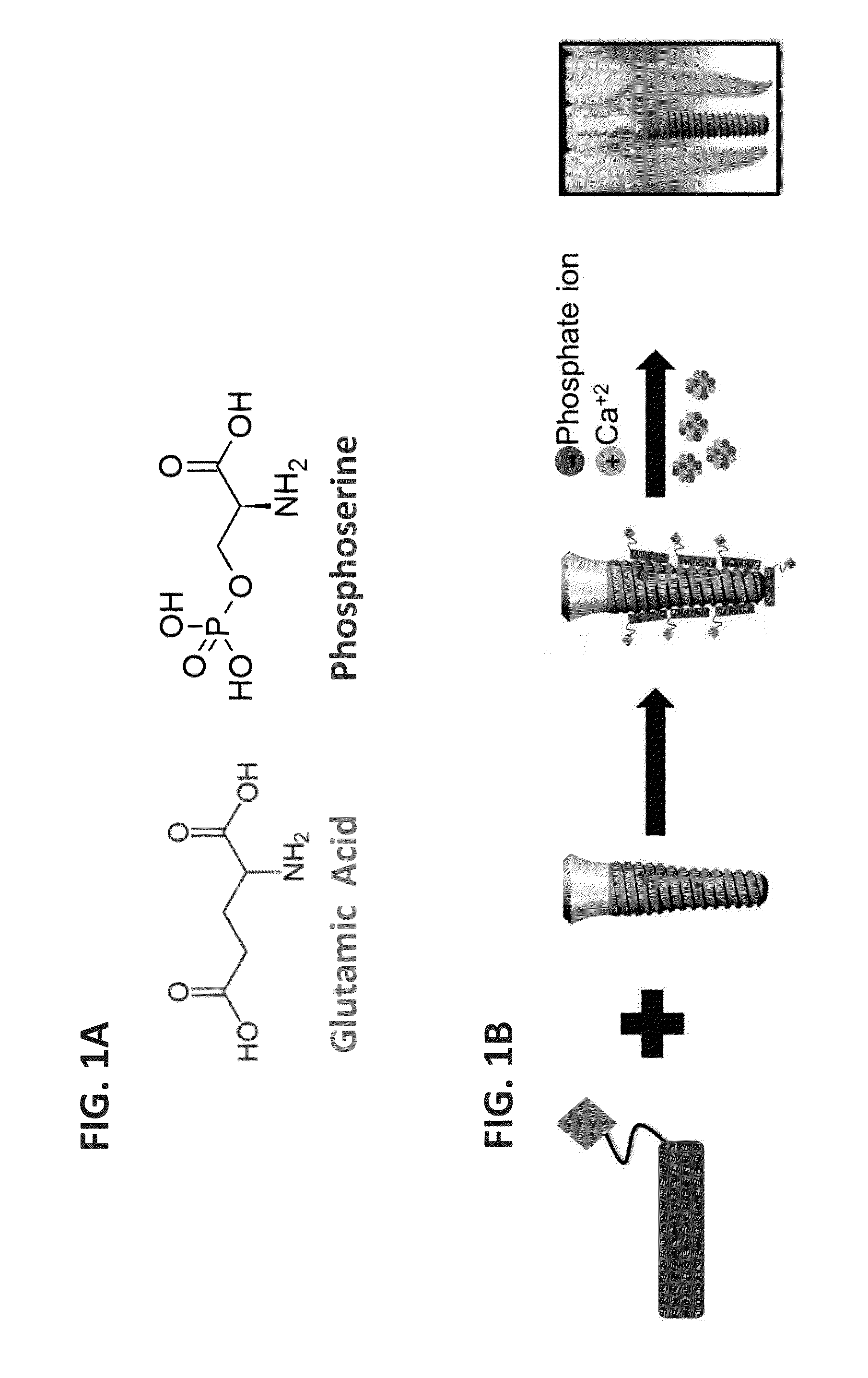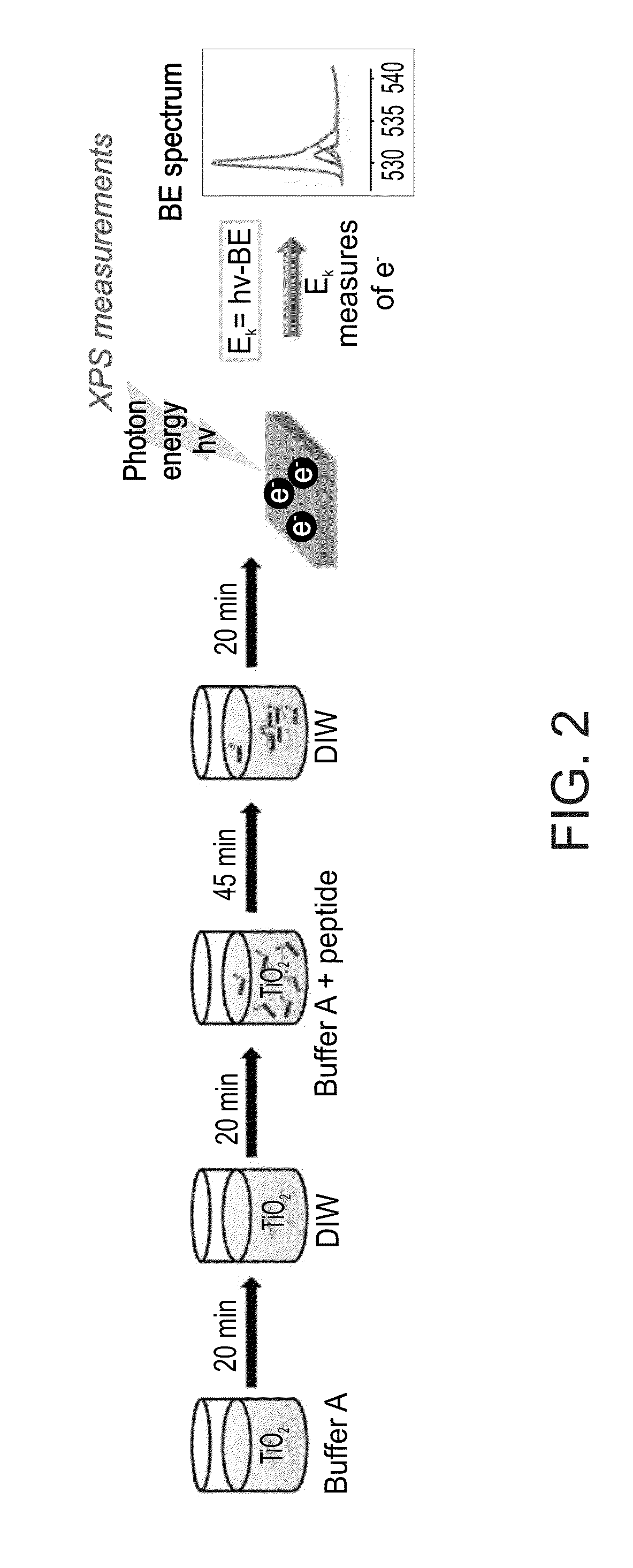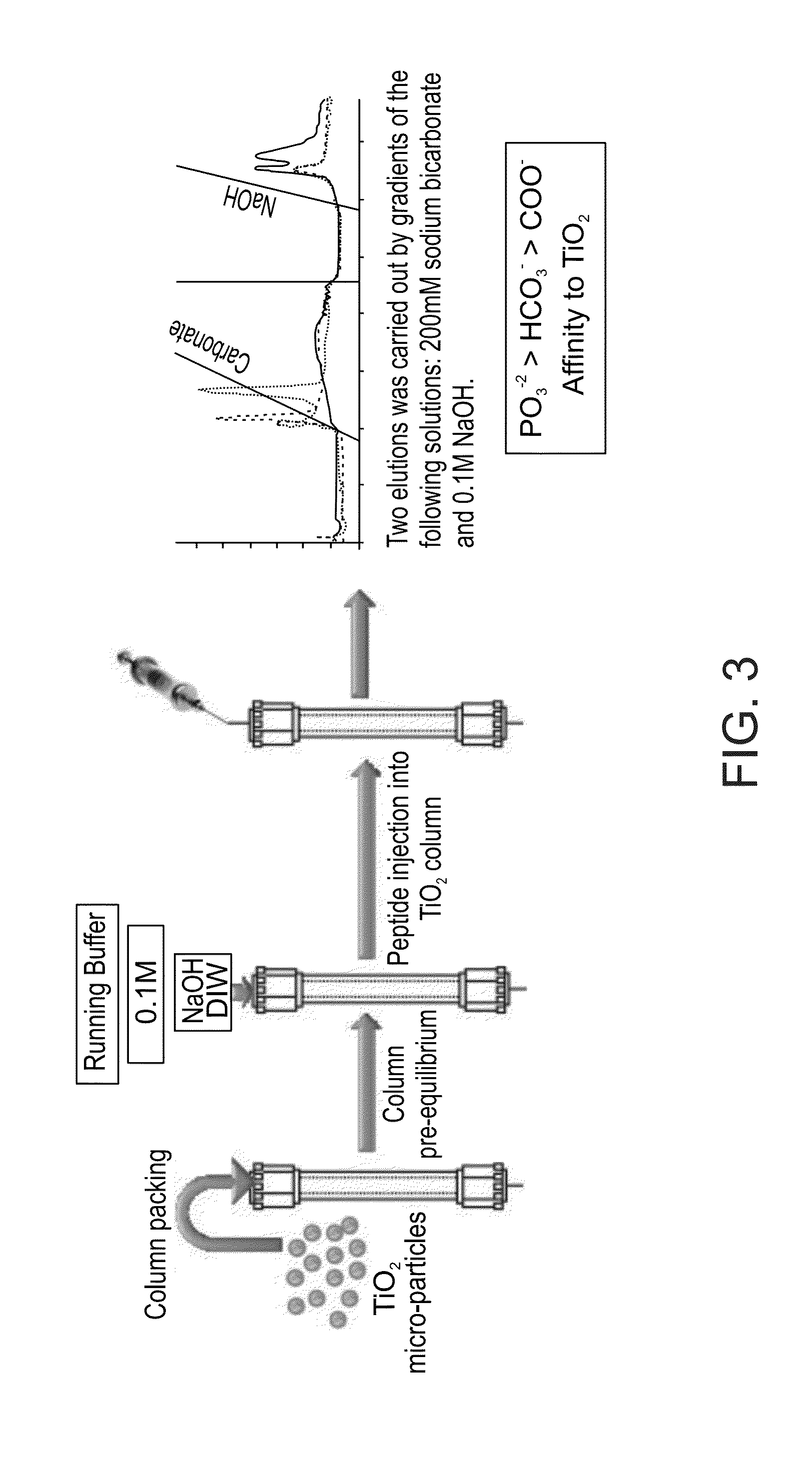Functionalized titanium binding peptides and implants coated with same
a technology of titanium implants and binding peptides, which is applied in the field of functionalized titanium binding peptides, can solve the problems of long-term failure of titanium implants, natural limits of human anatomy to the shape and allowable volume of implants, and the inability of mechanical and chemical methods to produce highly controllable topological properties
- Summary
- Abstract
- Description
- Claims
- Application Information
AI Technical Summary
Problems solved by technology
Method used
Image
Examples
example 1
Materials and Methods
[0215]Materials:
[0216]TiO2 particles (10 μm, Sachtleben, Duisburg, Germany). Analytical-grade sodiumacetate, Trizma base (Tris) and sodium hydroxide (Sigma, St. Louis, Mo.), sodium chloride, sodium phosphate and hydrochloric acid (Merck, Dermstadt, Germany), and HPLC-grade acetonitrile (Sigma, St. Louis, Mo.) were used for the chromatographic adsorption and desorption solutions. Water was purified by the Milli-Q system (Millipore, Bedford, Mass.) to 18.2 MΩ23 cm.
[0217]Chromatography on TiO2 Surfaces:
[0218]as described in Golan Gertler, Gideon Fleminger and Hanna Rapaport. Langmuir 2010, 26(9), 6457-6463, and further illustrated in FIG. 3. Stainless steel (4.6—50 mm) column was packed with TiO2 anatase (Sachtopore NP 10μ / 100 A.°, particle size / pore size respectively) suspended in methanol. The packed columns were washed consecutively with water and 0.1 M NaOH to desorb surface contaminants. The columns were then pre-equilibrated with the running buffer. Lyophiliz...
example 2
Materials and Methods
[0240]Peptides:
[0241]The peptides Pro-Ser(phos)-Phe-Ser(phos)-Trp-(Gly)3-(Glu)5 denoted ‘pSer’ (SEQ ID NO: 12) and Pro-pSer-Phe-pSer-Trp-(Gly)3 denoted ‘cpSer’ (SEQ ID NO: 13) was synthesized and purified by high performance liquid chromatography (HPLC) to >95% (Cambridge Research Biochemical). The peptide Pro-Ser(phos)-Ser(phos)-Phe-Trp-(Gly)3 denoted ‘β-cpSer’, (SEQ ID NO: 14) was synthesized and purified by HPLC to >95% (Caslo). TiO2 particles (10 μm, Sachtleben, Duisburg, Germany) had a surface area of 62.4 m2g−1. Unless otherwise specified, all reagents were purchased from Sigma-Aldrich (Rehovot, Israel) and were of the highest available purity. Sodium hydroxide, sodium bicarbonate, potassium phosphate and calcium chloride dehydrate. Tris-buffer saline (TBS) was prepared with Trizma™ base (10 mM) and NaCl (154 mM) adjusted to pH 7.50 with 0.1 M HCl. All solutions were prepared with deionized water (DIW) (18.2 MΩ×cm, Direct Q-5 Merck Millipore, Billerica, Ma...
PUM
| Property | Measurement | Unit |
|---|---|---|
| thickness | aaaaa | aaaaa |
| concentration | aaaaa | aaaaa |
| concentration | aaaaa | aaaaa |
Abstract
Description
Claims
Application Information
 Login to View More
Login to View More - R&D
- Intellectual Property
- Life Sciences
- Materials
- Tech Scout
- Unparalleled Data Quality
- Higher Quality Content
- 60% Fewer Hallucinations
Browse by: Latest US Patents, China's latest patents, Technical Efficacy Thesaurus, Application Domain, Technology Topic, Popular Technical Reports.
© 2025 PatSnap. All rights reserved.Legal|Privacy policy|Modern Slavery Act Transparency Statement|Sitemap|About US| Contact US: help@patsnap.com



